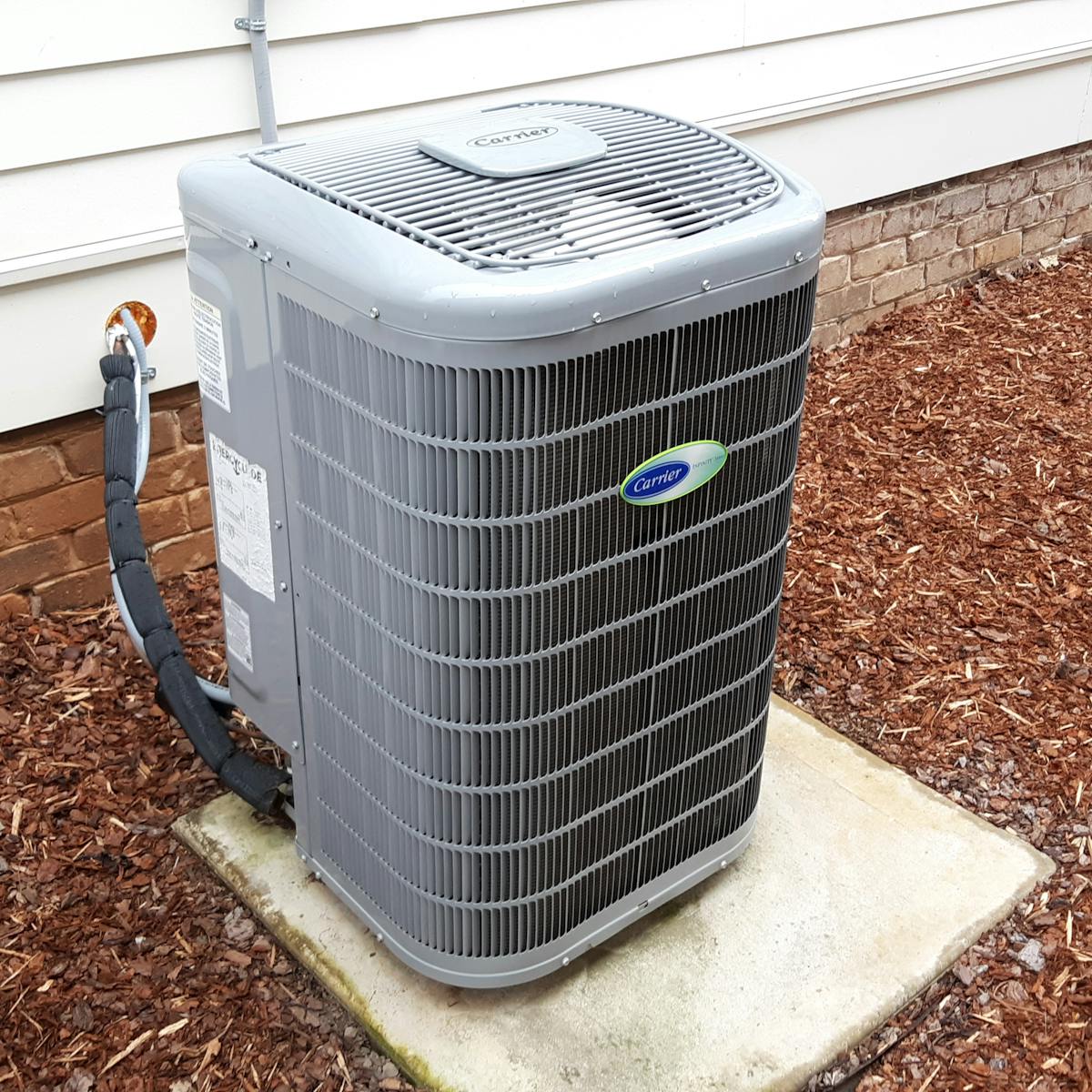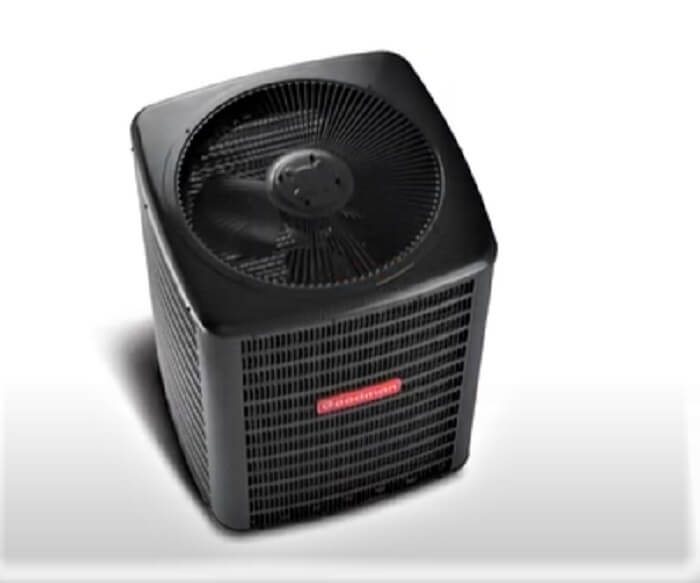| Note: This article may contain affiliate links, which means if you make a purchase following our links won’t cost you extra, but we may earn a commission. Learn more |
Geothermal and air source heat pumps are two of the most popular types of renewable energy systems on the market today. Heat pumps are devices that transfer heat from one place to another, and can be used for both heating and cooling purposes. Geothermal heat pumps use the ground as a heat source, while air source heat pumps use the air outside as a heat source.
Both types of heat pumps are very efficient and can save homeowners a lot of money on their energy bills. In addition, heat pumps are very environmentally friendly because they do not produce any emissions.
Geothermal and air source heat pump technology has been used for many years to heat and cool homes and commercial buildings. The technology is based on the transfer of heat energy from the ground or air to a building or home. Heat pump technology is very efficient, and can provide significant cost savings for homeowners and businesses.

Credit: theconversation.com
Can I Convert My House to Geothermal?
It’s a common question: can I convert my house to geothermal? And the answer is, maybe! Geothermal energy has been gaining in popularity as an environmentally friendly and efficient way to heat and cool homes.
If you’re thinking about making the switch to geothermal, there are a few things you need to know. First, what is geothermal energy? Geothermal energy comes from the heat of the earth’s core.
This heat is transferred to the surface of the earth through hot water or steam that exists naturally underground. A geothermal heating and cooling system use this natural heat to provide warm air in the winter and cool air in the summer. Geo-exchange systems are the most common type of residential geothermal system.
They consist of a buried loop of pipe (usually made of high-density polyethylene) that circulates a water/antifreeze mixture through your home. In the winter, this mixture absorbs heat from the ground and transfers it into your home. In the summer, it does just the opposite – transferring heat from your home back into the ground for storage.
The cost of converting your home to geothermal will vary depending on factors like where you live, how big your home is, and whether you need to drill any new wells or make other changes to your property. But if you’re considering making a switch, there are some important benefits to keep in mind:
1) You’ll save money on energy bills – since geothermal systems use less electricity than traditional heating and cooling systems, you can expect lower monthly bills. In fact, according to Energy Star, homeowners who use geo-exchange systems can save up to 30% on their heating and 20% on their cooling costs each year!
2) You’ll help protect our environment – by switching to renewable energy like geothermal power, you’ll be doing your part to reduce our reliance on fossil fuels and help combat climate change.
3) Your home will be more comfortable – because geo-exchange systems evenly distribute warmth (or coolness), you can say goodbye to drafts forever!
Related Post: How is a Heat Pump Related to an Air Conditioner?
Is an Air Source Heat Pump Geothermal?

The answer to this question is both yes and no. An air source heat pump can be used in conjunction with a geothermal system, but it does not rely on geothermal energy alone. Rather, air source heat pumps use the ambient air temperature to transfer heat to or from your home.
In cooler months, the heat pump extracts heat from the outside air and uses it to warm your home. In warmer months, the process is reversed, and the heat pump helps cool your home by releasing heat into the outside air.
How Much Does It Cost to Convert to Geothermal?
The cost of converting to geothermal energy depends on a number of factors, including the type of system you choose, the size and layout of your home, and the climate. Geothermal systems can be used for both heating and cooling, so if you live in an area with extreme temperatures, you may see a greater return on investment. The average cost to install a geothermal system is between $20,000 and $30,000.
What is the Difference between Air to Air And Geothermal Heat Pumps?
There are two main types of heat pumps: air-to-air and geothermal. Air-to-air heat pumps take warmth from the air outside and bring it into your home, while geothermal heat pumps use the ground as a source of heat. The main difference between these two types of heat pumps is their efficiency.
Geothermal heat pumps are more efficient than air-to-air models because they can better maintain a consistent temperature. They also don’t have to work as hard to cool your home in the summer or warm it in the winter, which saves energy and lowers your utility bills. Another difference is that geothermal heat pumps can last up to twice as long as air-to-air models, so they’re a great investment if you plan on staying in your home for many years.
If you’re not sure which type of heat pump is right for you, talk to a heating and cooling professional to learn more about the benefits of each type.
Converting to Geothermal Heat Pump
Geothermal heat pumps are not a new technology, but they are becoming increasingly popular as more homeowners look for ways to reduce their energy consumption and costs. A geothermal heat pump system uses the earth’s constant temperature to heat and cool your home, providing significant energy savings.If you are considering converting your home’s heating and cooling system to a geothermal heat pump, there are a few things you should know.
First, geothermal systems require a well or loop field that circulates water or other fluid through buried pipes. The earth’s constant temperature heats the fluid, which is then pumped into your home where it is used to heat or cool the air as needed.Geothermal systems can be used in any climate, but they are most efficient in areas with moderate temperatures.
They typically cost more to install than traditional heating and cooling systems, but the long-term energy savings can offset the initial investment. In addition, many utility companies offer incentives for homes that use renewable energy sources like geothermal heat pumps.If you’re thinking about converting to a geothermal heat pump system, do your research and talk to a qualified installer to find out if it’s right for your home.
Convert Mini Split to Geothermal
As the cost of energy rises, more and more homeowners are looking for ways to reduce their energy consumption. One way to do this is to convert a mini-split system to geothermal. Geothermal systems use the earth’s heat to provide heating and cooling, which can save a significant amount of money on your energy bills.
There are a few things you need to consider before converting your mini split system to geothermal, but the process is relatively simple and can provide you with substantial savings. Here’s what you need to know about converting a mini-split system to geothermal. The first thing you need to do is determine whether your home is suitable for a geothermal installation.
To do this, you’ll need to have an assessment done by a qualified contractor. The contractor will evaluate factors such as the size of your property, the type of soil on your property, and the climate in your area. If they determine that your home is suitable for a geothermal installation, they’ll be able to give you an estimate of the costs involved.
Once you’ve determined that you can proceed with a geothermal installation, the next step is to choose the right equipment for your needs. There are two types of geothermal systems: closed-loop and open-loop. Closed-loop systems are more efficient than open-loop systems and are typically used in areas where there’s a consistent underground temperature (such as in northern climates).
Open-loop systems are less efficient but may be more practical for some homeowners because they don’t require drilling or excavating on your property. Your contractor will help you choose the best option for your home based on factors such as climate and budget considerations. The final step in converting your mini split system to geothermal is having the actual installation done by a qualified professional.
This process usually takes one or two days depending on the size and complexity of the project. Once complete, you’ll be able to enjoy lower energy bills and improved comfort all year long!
Geothermal Heat Pump Temperature Range
A geothermal heat pump (GHP) is a type of heating and cooling system that uses the earth’s constant temperature to exchange heat with your home. In winter, it takes heat from the ground and transfers it into your house. In summer, it reverses this process by taking the heat out of your home and putting it back into the ground.
This makes for a very efficient way to regulate the temperature in your house year-round! The ideal temperature range for a GHP is between 50-60 degrees Fahrenheit. This range ensures that the system can both efficiently take heat from the ground in winter and deposit heat back into the ground in summer.
If your area experiences extreme temperatures outside of this range, you may still be able to use a GHP, but it likely won’t work as efficiently. If you live in an area with moderate temperatures and are looking for an efficient way to keep your home comfortable all year long, a geothermal heat pump could be right for you!
Geothermal Heating And Cooling System
A geothermal heating and cooling system also called a ground-source heat pump, is one of the most efficient and comfortable ways to heat and cool your home. Here’s how it works: In the winter, a geothermal system extracts heat from the ground and uses it to warm your home.
In the summer, the process is reversed, and the system helps cool your home by extracting heat from the air inside your house. Geothermal systems are incredibly efficient because they take advantage of free energy that’s already present in the ground. And because they don’t rely on fossil fuels to operate, they produce no harmful emissions.
Installing a geothermal system can be a major investment, but it will pay for itself over time through lower utility bills and maintenance costs.